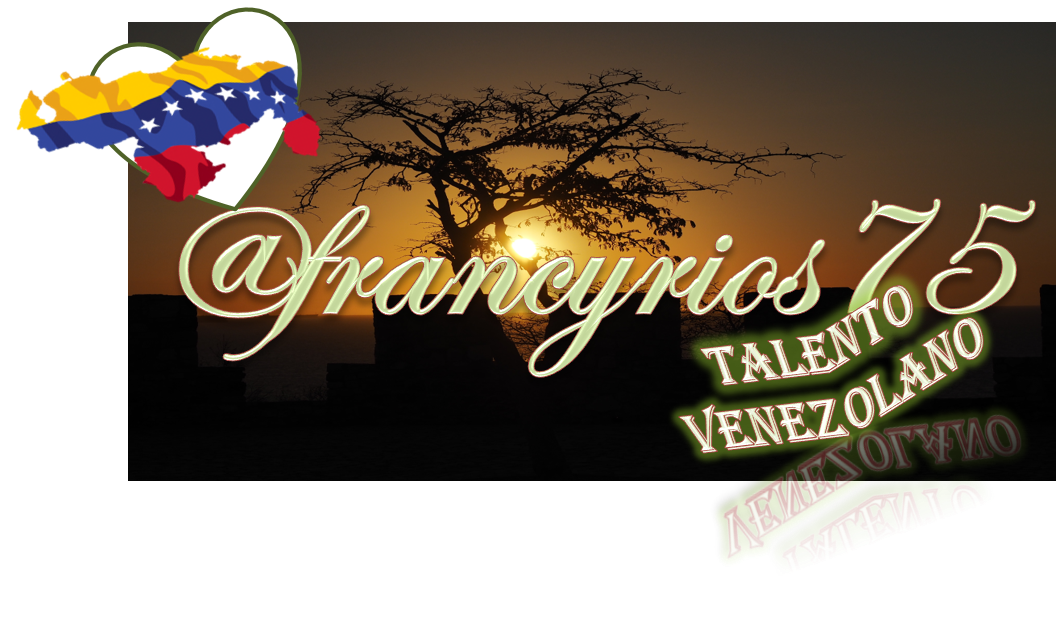#
Welcome Dear Photography Lovers
#
Bienvenidos Queridos Amantes de la Fotografía
---

Salud y bendiciones para todos mis queridos lectores, como siempre les digo, es un placer, estar de vuelta con ustedes, para compartirles otra selección de mi trabajo fotográfico. La protagonista en esta oportunidad es una planta muy representativa de mi querida Venezuela, lugar donde vivo, esto se debe, a que mi tierra posee una gran extensión de hermosas costas. Y este es el hábitat por excelencia de esta planta llamada comúnmente aquí en mi país, Uva de Playa, aunque su nombre científico es Coccoloba uvifera.
> ##### *Health and blessings to all my dear readers, as I always say, it is a pleasure to be back with you, to share with you another selection of my photographic work. The protagonist in this opportunity is a very representative plant of my beloved Venezuela, place where I live, this is due to the fact that my land has a great extension of beautiful coasts. And this is the habitat par excellence of this plant commonly called here in my country, Beach Grape, although its scientific name is Coccoloba uvifera.*
---
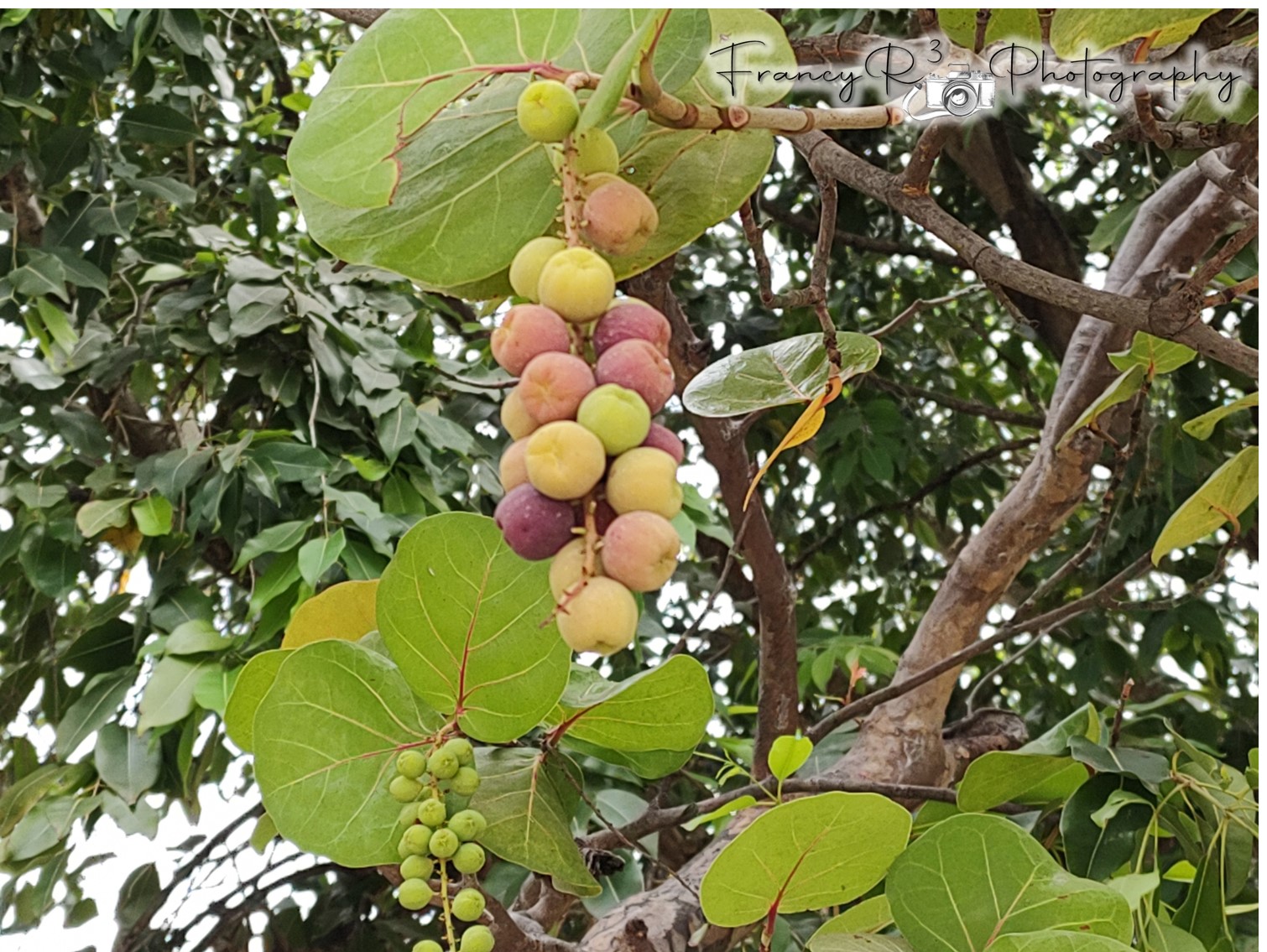

Un dato curioso sobre esta planta, que de seguro ya habrán notado y que, por cierto, es la misma razón de su nombre popular, al menos, aquí en Venezuela y es que, el fruto tiene cierto parecido con la Uva de vid, además, igualmente se desarrolla en racimos. Pero, la realidad, es que no existe ningún parentesco entre estas dos plantas, la Uva de playa o Coccoloba uvifera, realmente pertenece a la familia de las Polygonaceae.
> ##### *A curious fact about this plant, which surely you have already noticed and which, by the way, is the same reason for its popular name, at least here in Venezuela, is that the fruit has a certain resemblance to the grape vine, and it also develops in clusters. But the reality is that there is no kinship between these two plants, the beach grape or Coccoloba uvifera, actually belongs to the Polygonaceae family.*

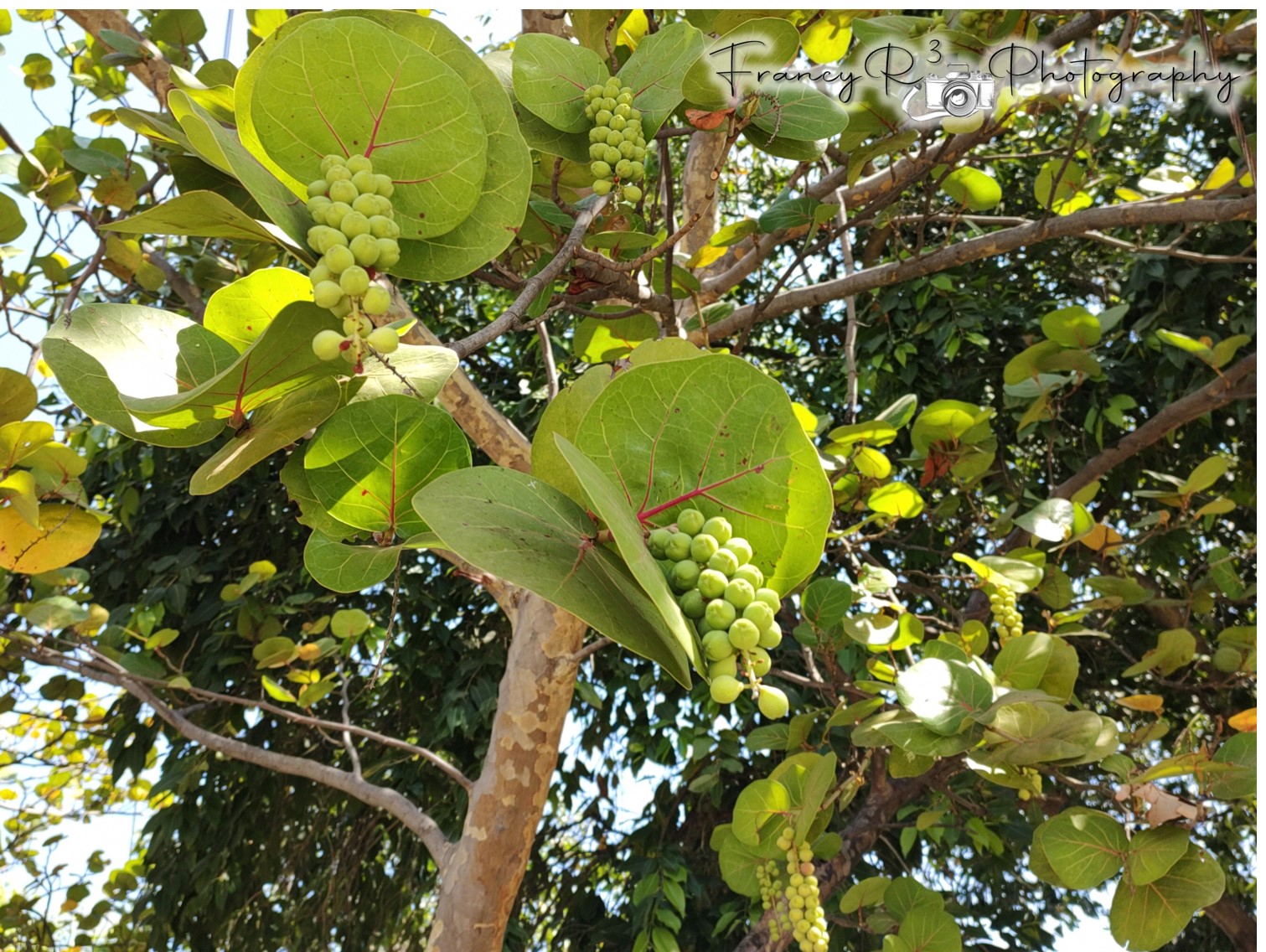

Aunque aquí en mi país, se le conoce como Uva de Playa a esta planta perteneciente al género Coccoloba, en otros lugares se le conoce popularmente por otros nombres. Seguidamente, les colocaré algunos de ellos que encontré durante mi investigación y así quizás les sea más fácil de identificarla, en el caso de que se encuentre también en el lugar donde viven. Kini americano, Kino de Jamaica, Uvero de Playa, Uvita Playera, Icaco, Iril, Iriles, Guiabara, Uva de la Caleta.
> ##### *Although here in my country, this plant belonging to the genus Coccoloba is known as Uva de Playa (Beach Grape), in other places it is popularly known by other names. Next, I will place some of them that I found during my research and so perhaps it will be easier to identify it, in case it is also found in the place where you live. "American Kini", "Kino de Jamaica", "Uvero de Playa", "Uvita Playera", "Icaco", "Iril", "Iriles", "Guiabara", "Uva de la Caleta".*



La planta de Uva de Playa o Uvero es un árbol de tronco grueso, leñoso, de corteza suave y color grisáceo. Oriundo del continente americano, es un árbol muy longevo y de crecimiento relativamente lento, crecen principalmente en playa o zonas costeras con clima suave y cálido. En cuanto a su tamaño, en algunas ocasiones puede llegar a alcanzar los 15 metros de altura, sin embargo, lo más común es encontrarlo de tamaños más reducido, entre los 2 y 8 metros de altura.
> ##### *The beach grape plant or "Uvero" is a tree with a thick, woody trunk, smooth bark and grayish color. Native to the American continent, it is a very long-lived and relatively slow-growing tree, growing mainly on beaches or coastal areas with a mild and warm climate. As for its size, sometimes it can reach 15 meters in height, however, the most common is to find it in smaller sizes, between 2 and 8 meters high.*



Se caracteriza por poseer ramas largas, que en la medida que crecen tienden a torcerse, esta peculiaridad le otorga un curioso aspecto, que tiende a tener mucho atractivo para ser usado como arbusto ornamental. En cuanto al follaje tiende a ser poco denso, aunque en el caso de la copa, si es normalmente bastante frondosa. Sus grandes y resistentes hojas son redondas como platos, están dispuestas de forma alterna y llegan a medir hasta 25 cm de diámetro. Durante el proceso de desarrollo de las hojas, estas son de un hermoso rojo cobrizo, pero, una vez que están completamente desarrolladas se tornan de color verde. Además, posee unas prominentes nervaduras que van desde una tonalidad verde rojiza hasta un tono rosado.
> ##### *It is characterized by long branches, which as they grow tend to twist, this peculiarity gives it a curious appearance, which tends to be very attractive for use as an ornamental shrub. As for the foliage it tends to be not very dense, although in the case of the crown, it is normally quite leafy. Its large and resistant leaves are round like plates, are arranged alternately and measure up to 25 cm in diameter. During the process of leaf development, the leaves are a beautiful coppery red, but once fully developed they turn green. In addition, it has prominent veins that range from a reddish-green to a pinkish tone.*

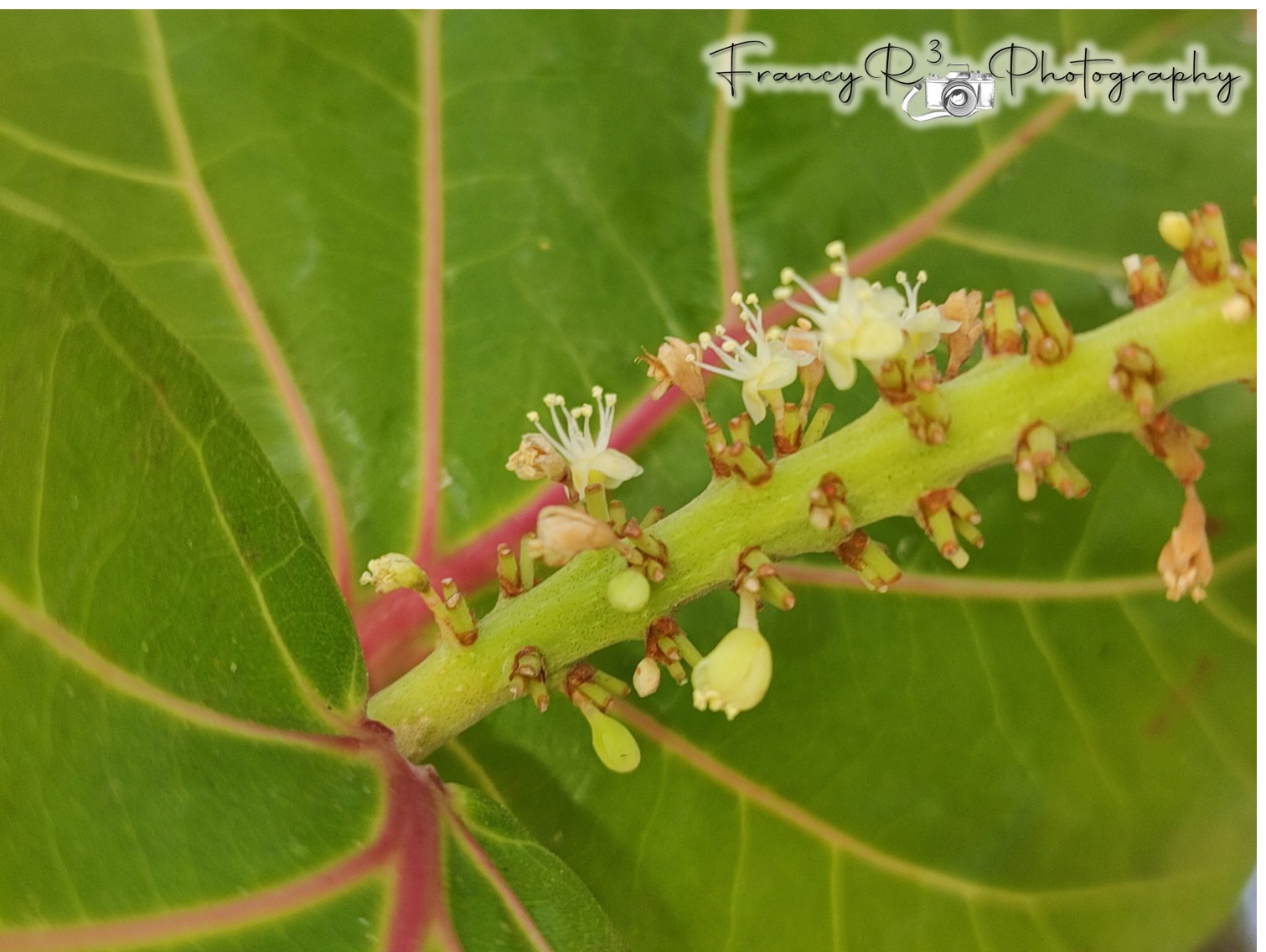

Las inflorescencias, florecen entre los meses de abril y junio; y a pesar que tienen forma de racimos colgantes, realmente no son muy vistosas, su tamaño oscila entre los 10 y 22 cm de largo. Esta conformada por una gran cantidad de sencillas florecillas de 5 pétalos, de un color, entre blanco y blanco verdoso, son muy pequeñas, llegan a medir unos 4mm de diámetro aproximadamente.
> ##### *The inflorescences, bloom between the months of April and June; and although they have the form of hanging clusters, they are not really very showy, its size ranges between 10 and 22 cm long. It is conformed by a great quantity of simple small flowers of 5 petals, of a color, between white and greenish white, they are very small, they arrive to measure approximately 4mm of diameter.*

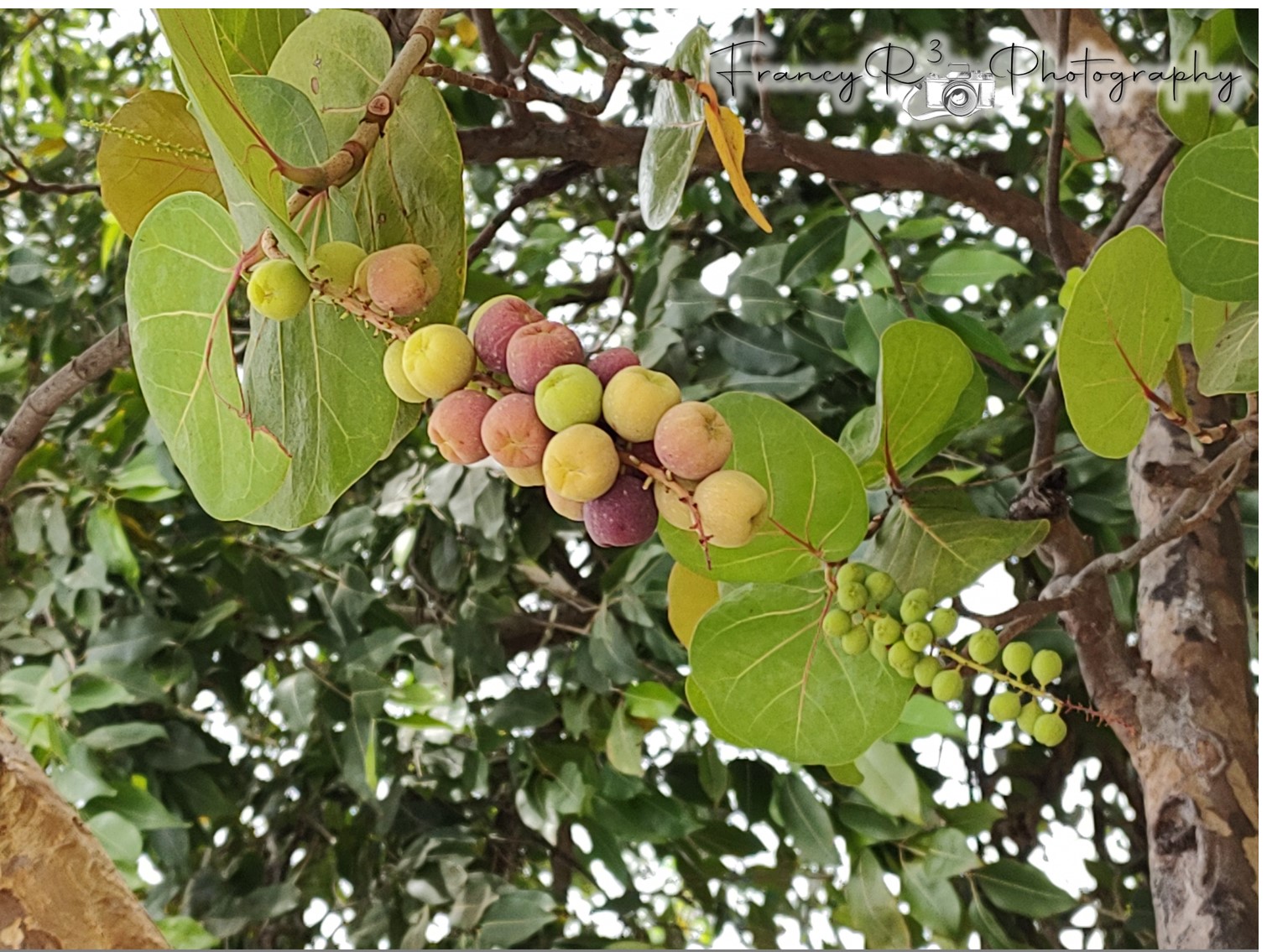

En cuanto a sus racimos de frutos, son en parte la razón de su gran atractivo, además, como ya les comenté, son el origen del nombre popular de la planta, ya que, se asemejan mucho a las uvas. Normalmente los frutos se producen entre los meses de julio a septiembre, aunque las plantas que se encuentran en mi urbanización, parecen tener el calendario un poco perdido. Como pueden ver en las imágenes que les comparto ya tienen frutos y apenas estamos finalizando el mes de abril.
> ##### *As for its fruit clusters, they are partly the reason for its great attractiveness, also, as I already mentioned, they are the origin of the popular name of the plant, since they are very similar to grapes. Normally the fruits are produced between the months of July to September, although the plants found in my urbanization, seem to have the calendar a little lost. As you can see in the images, I share with you, they already have fruits and we are just finishing the month of April.*

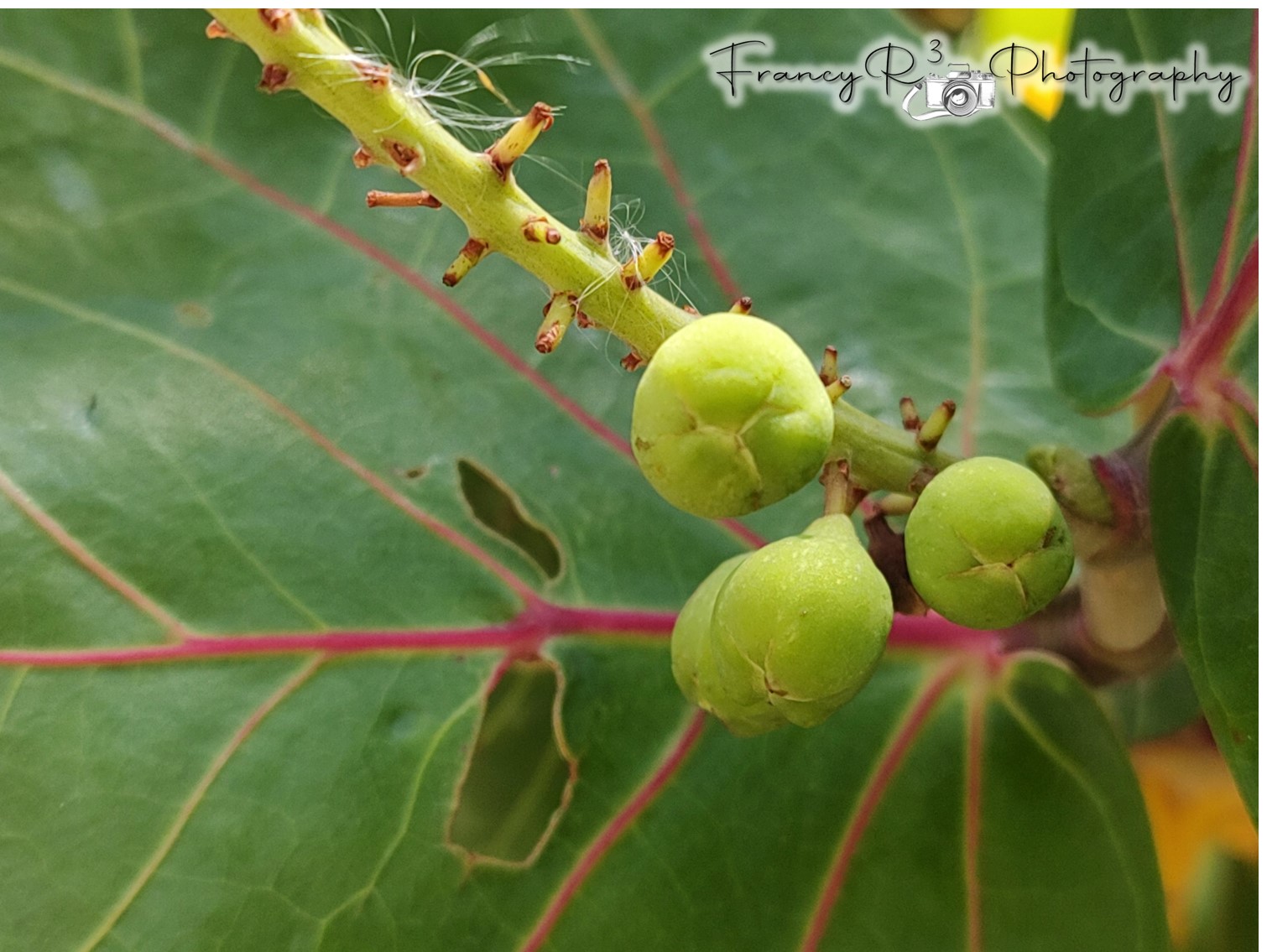

Siguiendo con los frutos, estos inicialmente son de color verde y van cambiando de color en la medida de que van madurando, cuando están totalmente maduros son de un intenso color violeta. De forma redondeada, miden unos 2 cm de diámetro, además, son muy aromáticos y en su interior encontraran una gran semilla huesuda cubierta por una jugosa y deliciosa pulpa de sabor dulce. Son muy utilizados para la elaboración de mermeladas, conservas, postres, helados y jugos. Es más, si el fruto se deja fermentar, se produce una bebida alcohólica de sabor muy similar al vino.
> ##### *Continuing with the fruits, these are initially green and change color as they ripen, when they are fully ripe, they are an intense violet color. Rounded in shape, they measure about 2 cm in diameter, they are also very aromatic and inside you will find a large bony seed covered by a juicy and delicious sweet-tasting pulp. They are widely used for making jams, preserves, desserts, ice cream and juices. Moreover, if the fruit is left to ferment, it produces an alcoholic beverage that tastes very similar to wine.*

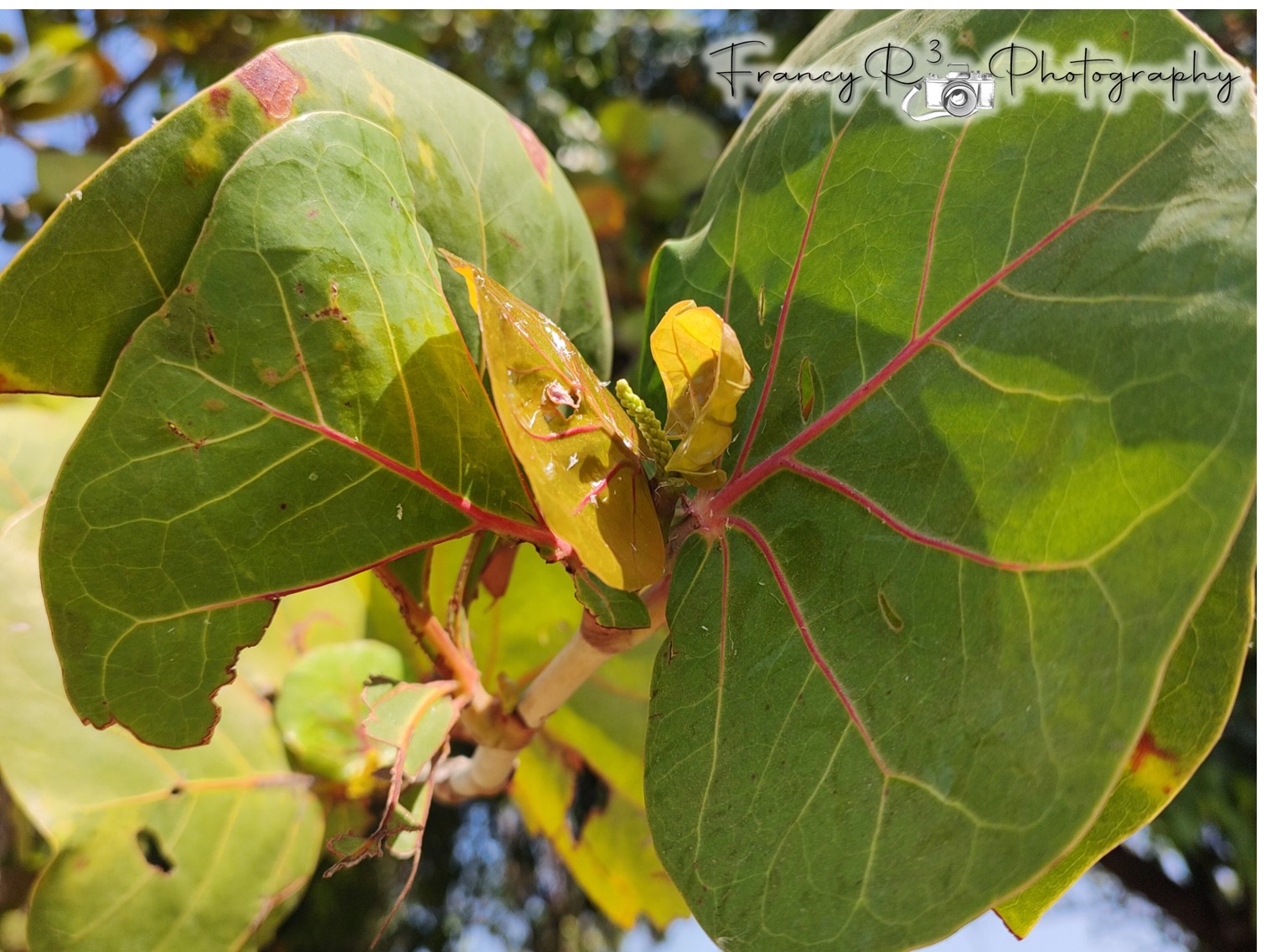

Pero, no solo el fruto tiene utilidad, varias partes de esta planta son utilizadas tradicionalmente con propósito medicinal. Las hojas por ejemplo preparadas en forma de té puede servir para controlar la diarrea y la semilla, al parecer tiene propiedades diuréticas. En el caso del tallo y las raíces también son utilizadas para contrarrestar problemas intestinales, además, a algunas partes de la corteza, se le atribuyen propiedades astringentes.
> ##### *But, not only the fruit is useful, several parts of this plant are traditionally used for medicinal purposes. The leaves, for example, prepared as a tea can be used to control diarrhea and the seed, apparently has diuretic properties. In the case of the stem and roots are also used to counteract intestinal problems, in addition, some parts of the bark, are attributed astringent properties.*

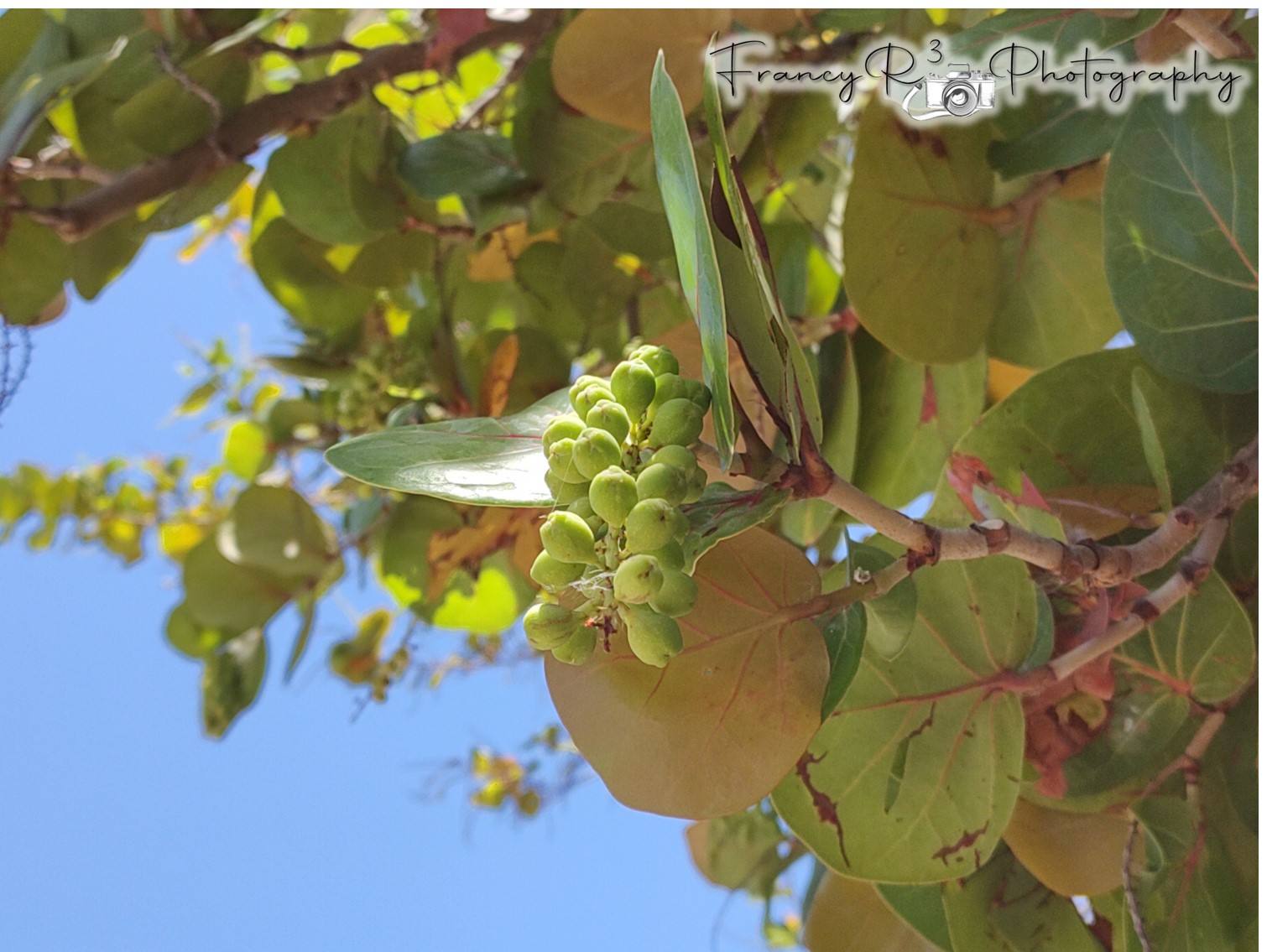

Como han podido leer la Coccoloba uvifera o Uva de Playa no tiene desperdicio, es realmente una planta genial. Dicho esto, no puedo despedirme de ustedes sin comentarles algo realmente relevante, esta planta es tan genial que incluso puede contribuir a atenuar las consecuencias del cambio climático. Esto es, porque al poseer una elevada tolerancia al agua salada del mar, ser muy resistente al viento por poseer raíces fuertes, le es posible crecer en la arena de las playas. Así que, al sembrar esta planta en estos entornos, contribuye a disminuir la erosión, lo que facilita el proceso de reforestación y ayuda a recuperar el equilibrio de los ecosistemas costeros.
> ##### *As you have been able to read, Coccoloba uvifera or Beach Grape has no waste, it is really a great plant. That said, I cannot say goodbye to you without telling you something really relevant, this plant is so great that it can even contribute to mitigate the consequences of climate change. This is because it has a high tolerance to salt water from the sea, it is very resistant to wind and has strong roots, so it can grow in the sand of the beaches. Thus, by planting this plant in these environments, it contributes to reduce erosion, which facilitates the reforestation process and helps to restore the balance of coastal ecosystems.*

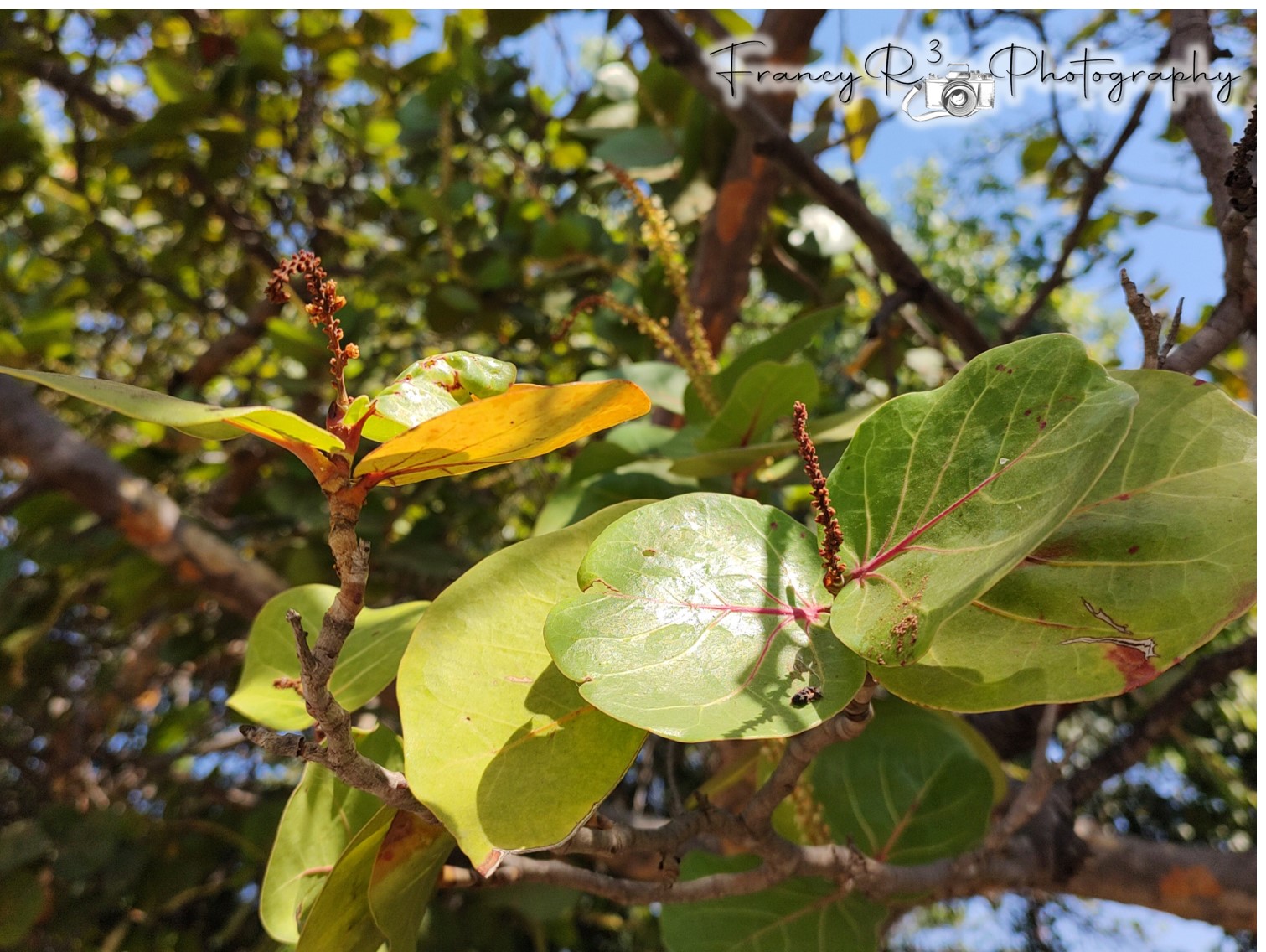

Bueno, queridos lectores y amantes de la naturaleza, solo me queda despedirme, esperando que las imágenes e información que les comparto de esta hermosa planta haya sido de su agrado. Muy especialmente, espero les guste a @bucipuci, @adalger y todo el equipo de trabajo de @dna y @amazingnature, ya que, es mi entrada para el concurso de esta semana, en el cual, si quieren participar, pueden acceder dando clip, al siguiente link [Amazing Nature Contest: FREE TOPIC - #1/5/23](https://hive.blog/hive-127788/@hive-127788/amazing-nature-contest-free-topic-1523). Mis mejores deseos bienestar y salud para todos, Dios los bendiga. Hasta la Próxima.
> ##### *Well, dear readers and nature lovers, it only remains for me to say goodbye, hoping that the images and information I share with you about this beautiful plant have been to your liking. Very specially, I hope @bucipuci, @adalger and all the team of @dna and @amazingnature like it, since, it is my entry for this week's contest, in which, if you want to participate, you can access by clicking on the following link [Amazing Nature Contest: FREE TOPIC - #1/5/23](https://hive.blog/hive-127788/@hive-127788/amazing-nature-contest-free-topic-1523). Best wishes for well being and health to all, God Bless. See you next time.*

### Bibliographic References || Referencias Bibliográficas
https://haimaneltroudi.com/uva-de-playa-manjar-de-los-guairenos/
https://www.actualidad-24.com/2013/09/propiedades-beneficios-uva-de-playa-uvero.html
https://www.riomoros.com/2015/07/uva-de-playa-coccoloba-uvifera.html
https://primicia.com.ve/especiales/yerberito/resuelve-los-problemas-intestinales-con-las-uvas-de-playa/
https://es.wikipedia.org/wiki/Coccoloba_uvifera

##
Contenido y fotografías de mi propiedad intelectual
##
Información Técnica
| Cámara | Pentax * istDL |
|---|---|
| Lente | * Pentax 18-55 |
| Iluminación | Luz Natural |
| Locación | Barcelona, Estado Anzoátegui, Venezuela |
##
Content and photographs of my intellectual property
##
Technical information
---
| Camera | Pentax * istDL |
|---|---|
| Lens | * Pentax 18-55 |
| Lighting | Natural Light |
| Location | Barcelona, Anzoátegui State, Venezuela |


